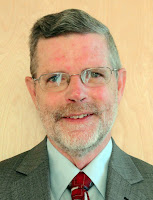1. What are the highlights of your public relations career?
All-time career highlight was serving on the original team of five people who brought unrelated bone marrow transplantation into being. Previously, few unrelated transplants were done, usually in desperation, and were rarely successful. But because of this work done in the '80s, today hundreds of transplants occur every month, and the five-year survival rate is around 70 percent, depending on diagnosis. Other highlights: serving, on special assignment, as chief of staff to the president of American Red Cross. Also, being elected to PRSA College of Fellows for advancing the state of practice in American Red Cross and in the nonprofit sector.
2. What are some of the key lessons that you have learned in your career?
Be a key advisor to the CEO and other senior managers. Understand that it’s all about building long-term, mutually beneficial relationships with the stakeholders who can help or harm the interests of the organization – forget “the general public,” forget media-centric public relations work (there are some rare exceptions to this latter). The employee public should be ranked as number one or number two in importance in virtually any organization. Networks are vital, and they are durable; you can pick up a good relationship even after years of dormancy.
3. You made the transition from public relations to CEO of the American Red Cross of the St. Paul Area. How did you make that transition, and what was the perspective like from that side?
 |
| David Therkelsen, APR, Fellow PRSA |
Public relations and CEO roles are similar to each other, but different from other functions, in that both are held highly accountable for what happens outside the organization, where they only have influence, not control. In my case, I spent much of my career as a key strategic advisor to CEOs; this helped me develop the mindset of a CEO. I also learned operations and finance, not just through earning an MBA, but also through taking on special assignments in these areas.
4. What predictions do you have for the evolution of public relations?
Enabled by technology, our society is dividing into ever-smaller fragments. Maybe this is professionally beneficial, it makes it easier to target and reach key audiences. I worry about its effects on the good of society as a whole; where’s the sense of overall community today? Public relations may succeed in “owning” the master of social media turf. But if we build the profession around this, we may lose that proverbial “seat at the table.” The CEO wants strategic thinkers, not technology high priests, helping him or her to make decisions.
5. What advice would you give to new public relations practitioners?
Build and maintain networks. Constantly think from the perspective of your bosses one and two levels above you. Read constantly and broadly, not just in your field. Get a graduate degree different from your undergraduate degree. Learn business broadly, and your specific business deeply. Maintain PRSA (or other) professional membership; give more than you get and you will then get more than you give.
6. Is there anything else that you would like to add?
Beethoven was the greatest musical genius who ever lived. Bar none. This has nothing to do with public relations; I just threw it in since you asked!

